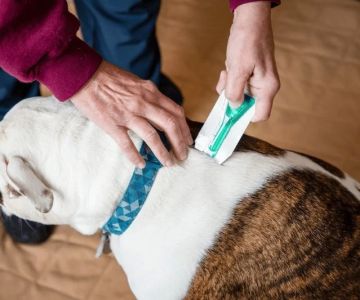- Understanding the Importance of Reliable Recall
- Key Principles of Effective Dog Recall Training
- Step-by-Step Guide to Training Your Dog to Come When Called
- Common Challenges and How to Overcome Them
- Real-Life Case Study: Enhancing Dog Recall Skills
- Professional Resources to Support Your Training Journey
1. Understanding the Importance of Reliable Recall
When it comes to dog ownership, teaching your furry friend to come when called reliably is not just a convenient trick—it's a vital safety skill. Reliable recall can prevent your dog from running into dangerous situations, protect them from harm, and strengthen your bond through effective communication. Whether you’re at the park, hiking, or simply in your backyard, having a dog that responds instantly to your call is invaluable.
Recall training is more than just saying a command; it’s about creating a positive and consistent response in your dog that builds trust and eagerness to return to you. This foundation makes other training easier and deepens your connection as a team.
Why Reliable Recall Matters
Many dog owners underestimate how critical recall can be until an emergency arises. Imagine a dog chasing after wildlife or darting toward a busy street—without reliable recall, these situations can quickly turn hazardous. Beyond safety, recall training also opens up opportunities for more freedom during outdoor activities, knowing your dog will come back when called.
2. Key Principles of Effective Dog Recall Training
Successful recall training rests on several key principles that emphasize patience, positivity, and repetition. Understanding these will help you create a reliable training routine.
Consistency and Timing
Dogs learn best when commands are given consistently and immediately followed by a reward. Using the same word or phrase—such as “come” or “here”—helps avoid confusion. Timing is critical; rewarding your dog right after they respond reinforces the behavior.
Positive Reinforcement
Recall training should always be a positive experience. Use high-value treats, praise, and affection to encourage your dog to come eagerly. Avoid punishment if your dog hesitates or ignores the call, as negative responses can create fear or avoidance.
Gradual Increase in Distractions
Start training in a quiet, controlled environment and gradually introduce distractions. This helps your dog learn to focus on you no matter what is happening around them. Progressing too quickly can lead to frustration for both you and your dog.
3. Step-by-Step Guide to Training Your Dog to Come When Called
Below is a detailed process to help you build reliable recall skills in your dog:
Step 1: Start Indoors or in a Quiet Space
Begin training where distractions are minimal. Use a cheerful tone and call your dog by their name followed by the recall command. Reward immediately when they come to you.
Step 2: Use High-Value Rewards
Identify treats or toys your dog loves. Use these exclusively for recall training to increase motivation. This ensures your dog associates coming to you with a very positive outcome.
Step 3: Practice Short Distances
Initially, call your dog from just a few feet away. Gradually increase the distance as your dog becomes more consistent. Always reward your dog promptly to reinforce the behavior.
Step 4: Introduce Controlled Distractions
Practice recall in the presence of mild distractions, such as a family member walking nearby or light noises. This helps your dog learn to focus on your call despite the environment.
Step 5: Train Outdoors with a Long Leash
Once indoor recall is solid, move to outdoor settings using a long training leash for safety. Practice calling your dog back and rewarding their return, gradually increasing distractions and distance.
Step 6: Make Recall Fun and Rewarding
Incorporate games like fetch or hide-and-seek where your dog must come to you. Keeping training enjoyable encourages enthusiasm and builds a stronger recall habit.
4. Common Challenges and How to Overcome Them
Many dog owners face obstacles when training reliable recall. Understanding and addressing these challenges will improve your training success.
Distractions Are Too Overwhelming
If your dog ignores your call in highly distracting environments, return to a less distracting setting and practice more. Gradually increase the complexity only when your dog shows steady progress.
Recall Only Happens Sometimes
Inconsistency often arises from mixed signals. Ensure everyone in your household uses the same command and reward system. Avoid calling your dog to punish them, as this damages trust.
Dog Runs Away or Avoids Recall
If your dog treats recall as a game of chase, stop chasing them. Instead, turn around and walk away or use a playful tone to invite them. This shifts the dynamic to a positive return.
5. Real-Life Case Study: Enhancing Dog Recall Skills
Consider the story of Mia and her Labrador, Buddy. Initially, Buddy had poor recall, often distracted by squirrels and other dogs. Mia implemented a consistent recall training plan focusing on high-value treats and gradual distractions.
By practicing daily, beginning indoors and then moving to quiet parks, Buddy’s recall improved significantly within weeks. Mia also made training fun by turning it into a game during their walks. Eventually, Buddy reliably came when called, even near busy streets.
This real-life example shows that patience, consistency, and positive reinforcement truly work. For pet owners like Mia seeking tailored advice or professional products, Hidden Brook Veterinary offers a great range of training tools and expert services to support your dog’s learning journey.
6. Professional Resources to Support Your Training Journey
While DIY training can be effective, sometimes professional guidance is invaluable. Hidden Brook Veterinary provides access to skilled trainers, quality training products, and behavior consultations that can help tailor recall training to your dog’s unique personality and needs.
Whether you are facing stubborn recall challenges or want to enhance your dog’s obedience further, expert resources can save time and reduce frustration, ensuring your dog’s safety and your peace of mind.
Remember, effective recall training is a journey that builds stronger trust and communication with your dog, enriching your life together in countless ways.











